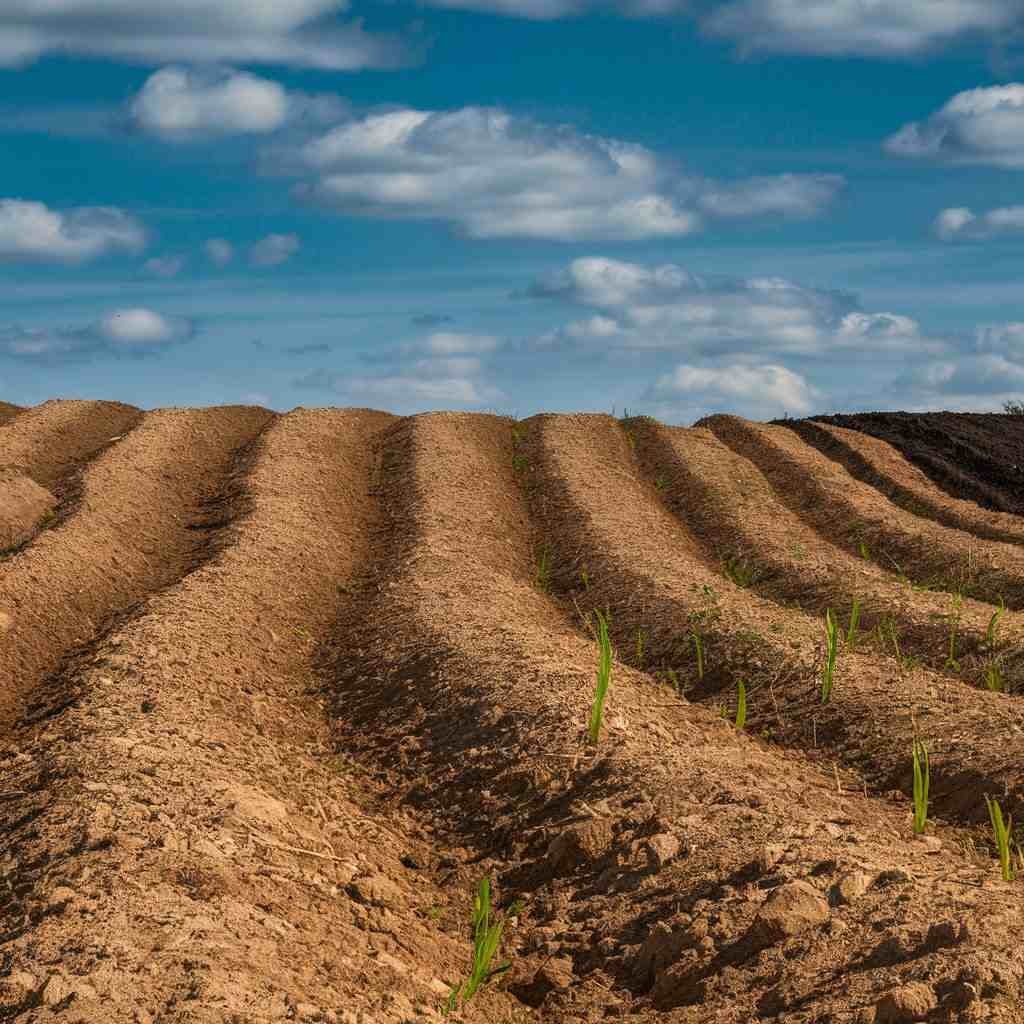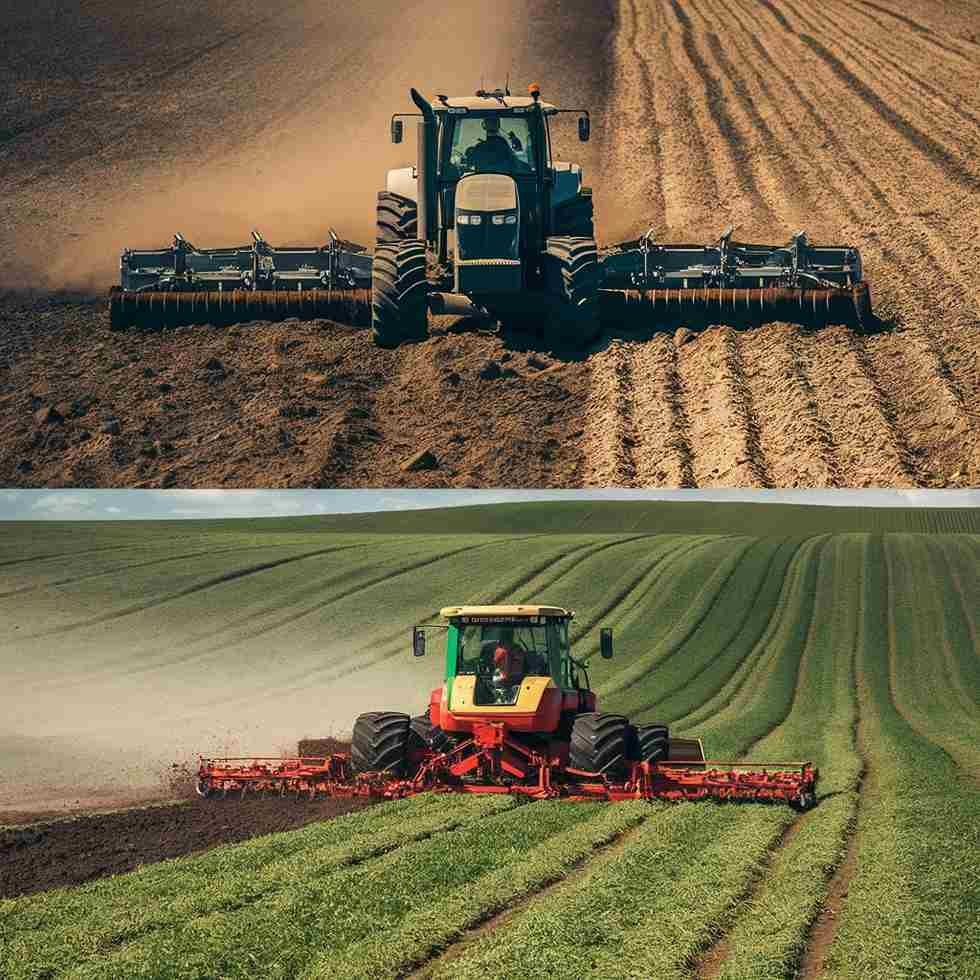Tillage is the agricultural technique of mechanically preparing soil for crop planting. In order to improve soil conditions for the best possible crop growth, it entails the use of equipment like plows, harrows, and cultivators to break up the soil, add organic matter, and control weeds. This fundamental farming method has developed from antiquated manual methods to sophisticated mechanized ones, meeting the demands of contemporary agriculture while maintaining a balance between sustainability and productivity.
Table of Contents
Definition
The agricultural process of preparing soil for crop planting by mechanical agitation with plows, harrows, and cultivators is known as tillage. By removing weeds, adding organic matter, and dissolving compacted layers, this procedure enhances the conditions of the soil. It has changed historically, moving from labor-intensive manual methods in prehistoric societies to sophisticated mechanized methods in contemporary agriculture. To maximize crop growth while upholding sustainable farming practices, different types such as conventional, conservation, and reduced tillage are used depending on the condition of the soil, the needs of the crop, and the environment.

Weed control is one of the main goals of it. It reduces competition for nutrients and sunlight by turning the soil over and burying plant residues and weed seeds. By preventing undesirable plants from growing, this mechanical disturbance increases the likelihood that crops will flourish. Additionally, by releasing compacted soil layers and facilitating easier penetration of air, water, and nutrients, it can aid in soil aeration. Better root development is encouraged by this improved soil structure, which is important for the uptake of vital nutrients and water.
History
It’s history demonstrates how human ingenuity and our relationship to the land have changed over time. Since its inception, this process of mechanically agitating soil in agriculture has experienced substantial change. Hand tools, such as digging sticks were among the primitive hand tools used by early farmers, who date back to the Neolithic era, to break and loosen the soil. The more advanced tools and techniques were inspired by these basic implements.
- Ancient Times: Hand tools, such as digging sticks, were used to carry out the first tillage operations. This practice has roots in the early agricultural periods of Mesopotamia and Egypt, among other ancient civilizations.
- Middle Ages: A major development that allowed for deeper and more efficient soil turning was the moldboard plow, which was introduced in medieval Europe.
- Modern Era: Mechanized tillage was introduced by the Industrial Revolution, which also saw the development of tractors and more sophisticated plowing equipment, increasing farming’s productivity and scope.
Types
Different processes and equipment are used in the various types of tillage, which have different purposes. Optimizing crop output, soil health, and sustainability all depend on an understanding of the various forms of tillage.
- Primary Tillage: Deep plowing is usually used in this first major soil working operation to break up and loosen the soil. Moldboard plows, chisel plows, and disc plows are among the tools used.
- Secondary Tillage: This type of soil preparation comes after primary tillage and is more thorough. Its goal is to level the field and break up soil clods in order to create a suitable seedbed. Harrows, rollers, and cultivators are examples of tools.
- Conservation Tillage: Intended to maintain soil moisture and lessen soil erosion. This includes minimally disturbing the soil techniques like no-till, strip-till, and ridge-till.
Methods
Many techniques are used by modern farmers, each one suited to their unique requirements and local environment. The efficiency of conventional tillage in seedbed preparation and weed control has led to its continued widespread use. Conventional tillage is typically characterized by plowing, disking, and harrowing. But occasionally, compaction and soil erosion from conventional tillage can lead to the investigation of novel techniques.

1. Conventional Tillage:
In this, the soil is meticulously prepared mechanically, usually with the aid of cultivators, moldboard plows, and disc harrows. By thoroughly turning and loosening the soil, this technique effectively buryes weeds and crop residues, resulting in a fine seedbed that is ready for planting. It can improve soil aeration and planting ease, but it also frequently causes more soil erosion, less soil moisture retention, disturbance of the microbial community, and changes in soil structure. It works well for producing crops right away, but its long-term environmental effects must be carefully managed.
2. Conservation Tillage:
It is a farming technique that aims to maintain soil structure, lower erosion, and hold onto moisture by minimizing soil disturbance. Utilizing techniques like no-till, strip-till, and ridge-till, crop residues are left on the field to safeguard the soil’s surface. By preserving organic matter, encouraging beneficial microbial activity, and enhancing water infiltration, this method improves soil health. Reducing runoff, preserving water, and lessening the effects of climate change are some of the long-term environmental advantages of it. It also promotes sustainable crop production.
3. Reduced Tillage:
It is a method of farming that lessens the frequency and intensity of soil disturbance. To retain more crop residues on the surface, it entails the use of methods like rotary tilling and chisel plowing, which loosen the soil without totally turning it over. This strategy lowers labor and fuel costs while increasing crop productivity and sustaining soil health by lowering erosion, increasing moisture retention, increasing organic matter content, and preserving soil structure.
In summary, tillage techniques, ranging from traditional to cutting edge, are essential to contemporary farming. Farmers can improve soil health, decrease erosion, and increase overall farm productivity by combining sustainable practices with technological advancements. These changing methods will continue to influence how it is used in agriculture in the future, giving farmers all over the world useful knowledge and advantages.
Frequently Asked Question(FAQ)
What are the main purposes of tillage?
Tillage is primarily used to manage crop residues, control weeds, enhance soil aeration and moisture retention, and facilitate plant growth and seed germination.
Why is tillage important for agriculture?
Tillage plays a vital role in agriculture by incorporating organic matter, controlling weeds, improving soil conditions, and preparing the ground for planting—all of which are essential for productive and healthy crop growth.
Related Articles

